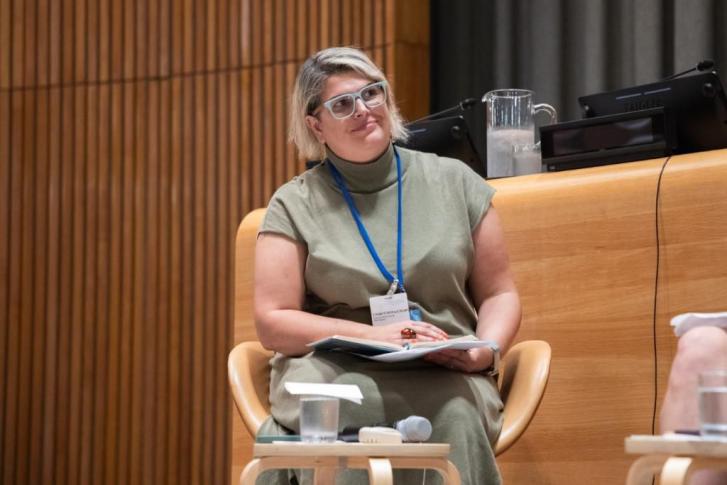
These talking points were presented at the Interactive Dialogue on Addressing Gender-based Violence in a Digital World held during the Second Regular Session of the UNFPA Board by Paula Martins, the Human Rights Policy Advocacy Lead at the Association for Progressive Communications.
The rapid expansion of technology has the potential to increase women’s participation and access to information and provide new tools and spaces for mobilisation, exchange and activism. At the same time, however, the increased use of digital technology imposes new challenges to women’s historical struggle against harassment, misogyny, hatred and violence.
Technology-facilitated gender-based violence (TFGBV) not only hurts women and girls, it impacts on society as a whole, making our societies less peaceful and safe and our democracies less diverse and plural. It is pervasive and constitutes both a cause and an effect of gender inequality.
The identity of an individual plays an important role in why and how they are targeted. Recent studies demonstrate the widespread nature of online harms and the greater negative impact of such harms on women and LGBTQI+ people. Data available identifies subgroups of women that are at heightened risk of online GBV, as they are offline. Compounding layers of discrimination make them more vulnerable both to attacks and to their differentiated impacts.
According to a recent survey carried out by the Centre for International Governance Innovation (CIGI) in 18 countries, and supported by APC, among participants who experienced at least one type of online harm, 71% identified social media as the platform where it occurred.
TFGBV serves to promote cultures of violence, exacerbate the gender digital divide, worsen women’s economic exclusion, stifle women’s voices, and infringe upon women’s rights to political participation. In short, TFGBV can not only replicate, but amplify and normalise existing cultures of patriarchal violence and misogyny.
Although we are witnessing increased attention to addressing the issue of TFGBV, there continue to be shortcomings in the evidence, including concerning its forms and drivers – recognising that there are challenges in capturing this given the constantly evolving nature of technologies. The impact, for example, of generative AI or campaigns of disinformation upon gender equality is not yet well understood, either as a direct impact upon individual women or as society as a whole.
At this point, it is important to note that in addressing TFGBV we must remember that technology is embedded with the biases and prejudices that are already entrenched in our culture, laws and practices.
As such, while there are several forms of violence unique to TFGBV, including non-consensual image-based abuse, online trolling, gendered disinformation, non-consensual use of georeferencing and spyware, it also occurs across a continuum of violence – from online to offline violence. The root causes of violence are the same. The violence is just taking place in new and emerging spaces and mediums.
In order to continue to address the underlying inequalities perpetuated by the design of technology, it is critical to ensure that we have women’s participation in the making of technology and in the making of the laws and policies that regulate it.
Technological development must also embed safety-by-design standards. In this way, inherent gendered and other harmful biases and threats can be mitigated before the release of the technology. Again, this must be done in partnership with women and other marginalised communities to ensure the best possible outcomes.
We are at a critical moment in the global response to TFGBV. Normative language and standards are being discussed and developed to regulate and govern the internet and other digital technologies in a global context marked by a backlash against women’s rights and sexual rights.
At the same time, actors in the TFGBV field from across women’s rights, digital rights, sexual rights, disability rights and racial justice movements have multiplied and a proliferation of processes and structures have emerged – driven by states, the private sector and civil society – as part of this response.
We need to continue to build movements, partnerships and alliances to more strategically face the challenges of tech facilitated GBV.